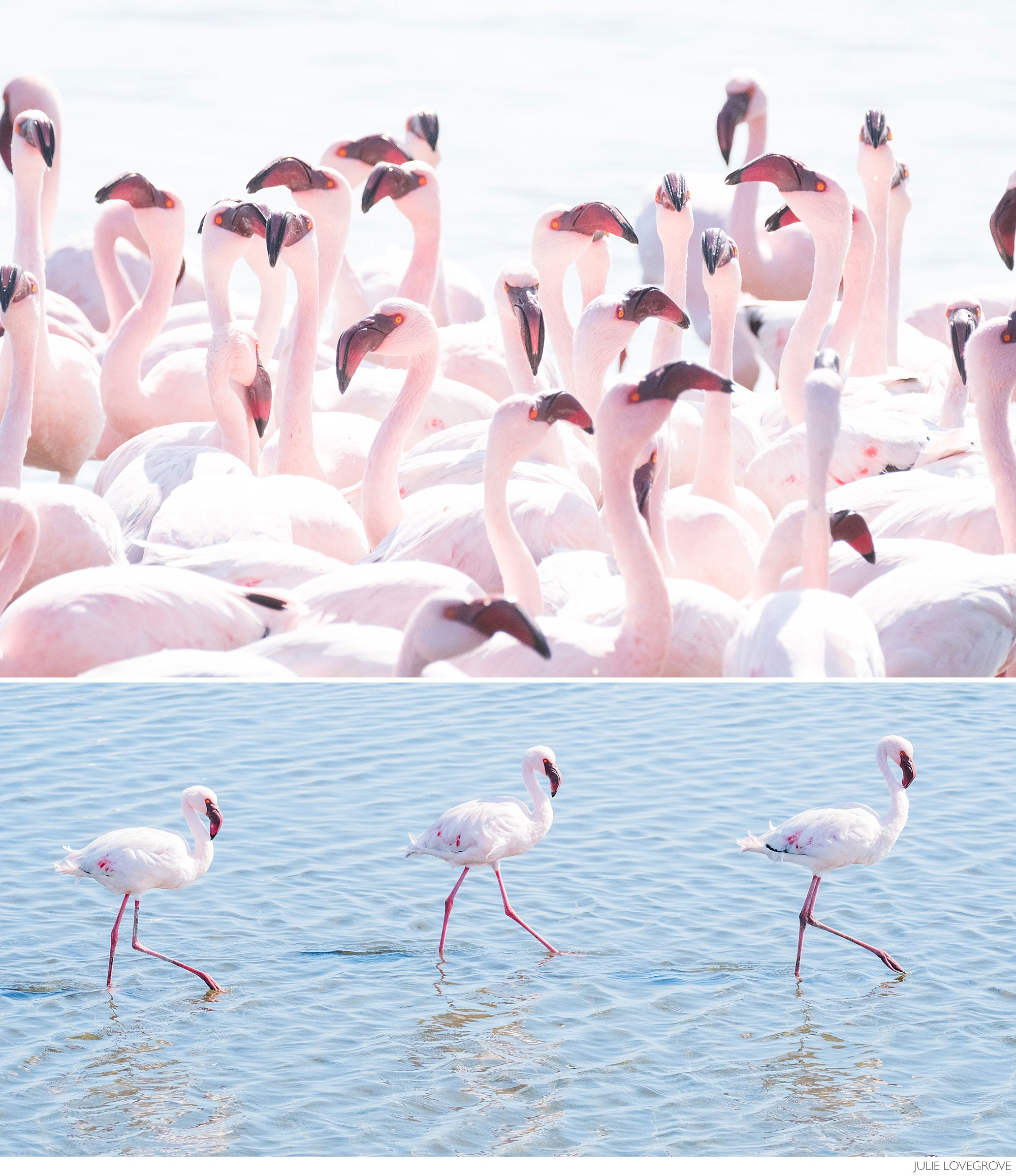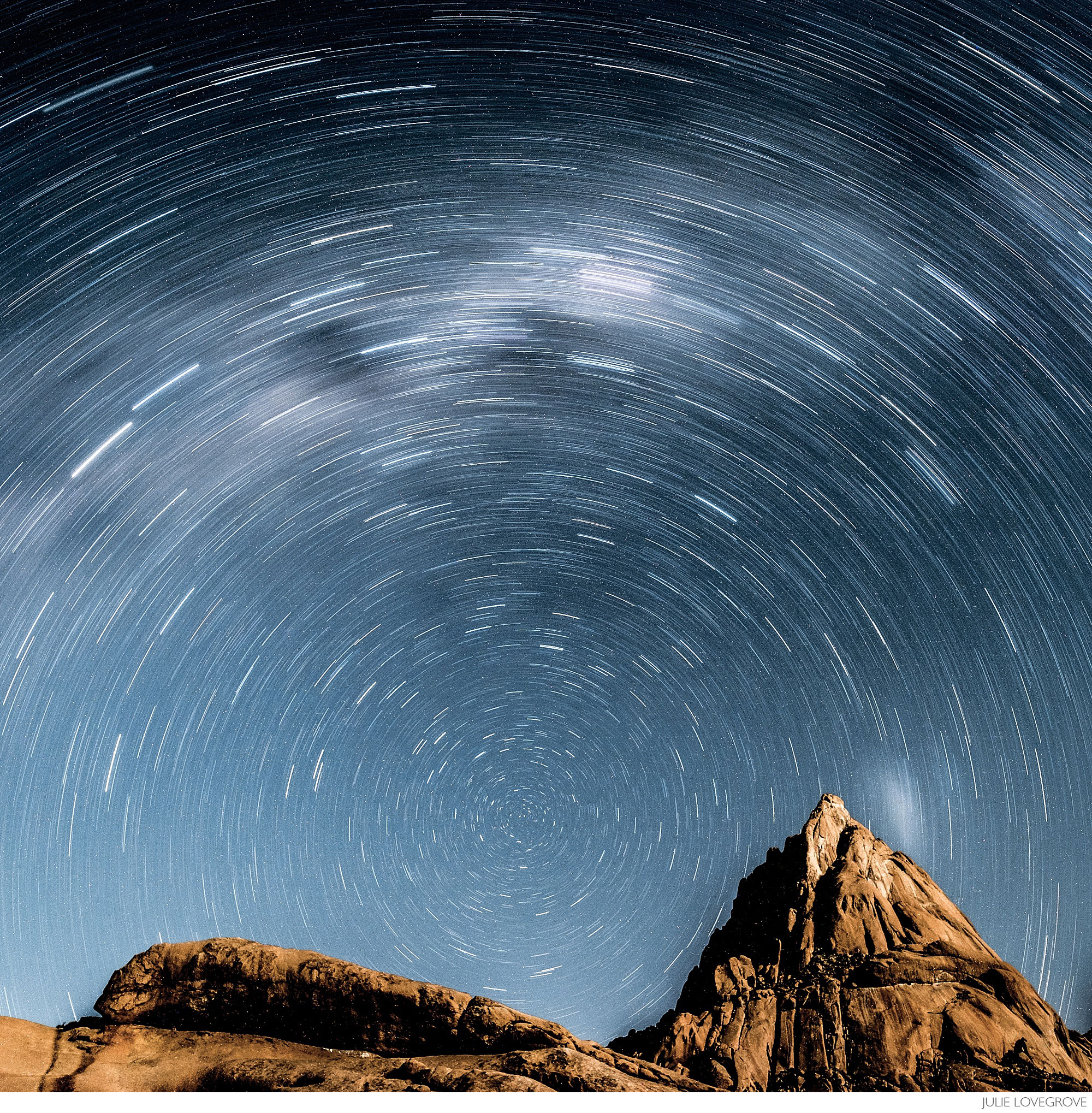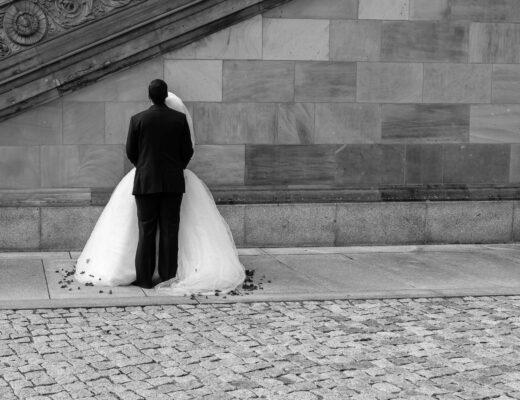I first visited the great continent of Africa in 2003 when I was commissioned to photograph a new safari lodge by their marketing team. Back then I was a dedicated Nikon user lugging around a heavy camera system but strict weight restrictions on hand luggage and being unwilling to risk my camera kit in the hold meant that I needed to change my camera system.
The first time I held a Fujifilm X-E2 I couldn’t believe how light it was. The XF18-55mm OIS standard lens outperformed my heavy Nikon zoom and was a fraction of the size too. I now partner that ‘kit’ lens with the XF100-400mm zoom and the XF14mm on my X-T2 for my adventures and road trips.
I confess that I’m probably the complete opposite of pretty much everyone who will be reading FujiLove, as although I have enough knowledge and experience to be able to handle most situations I find myself in, I am not in the slightest bit ‘technical’, when it comes to photography. I don’t hanker after the latest kit and I don’t read camera comparisons. I do occasionally have lens envy when somebody I’m with has a much longer lens and we’re photographing wildlife. The animals and birds are often a long way away, but I then feel the weight of the bigger lenses and know that I wouldn’t want to lug something around like that. I’ve used the X-T2 since it was handed down to me 18 months ago, and boy, has it worked hard for me. Often covered in African dust, with everything grating slightly as I make adjustments to focal length, iso, exposure compensation etc, but it’s never let me down.
Here’s a very condensed account of a two week road trip I planned and undertook around Namibia last year.
With their unusual bark and unique shape, Quiver Trees are only found in Southern Africa. We arrived at this Quiver Tree forest in time to take some photographs around sunset, and also rose early just before dawn to photograph them at sunrise. During the golden hour I find the camera settings need constant adjustment as the light changes so rapidly. I find the X-T2 so user friendly that I can change everything in a heartbeat. The dials give instant access to all the important functions without having to use menus.
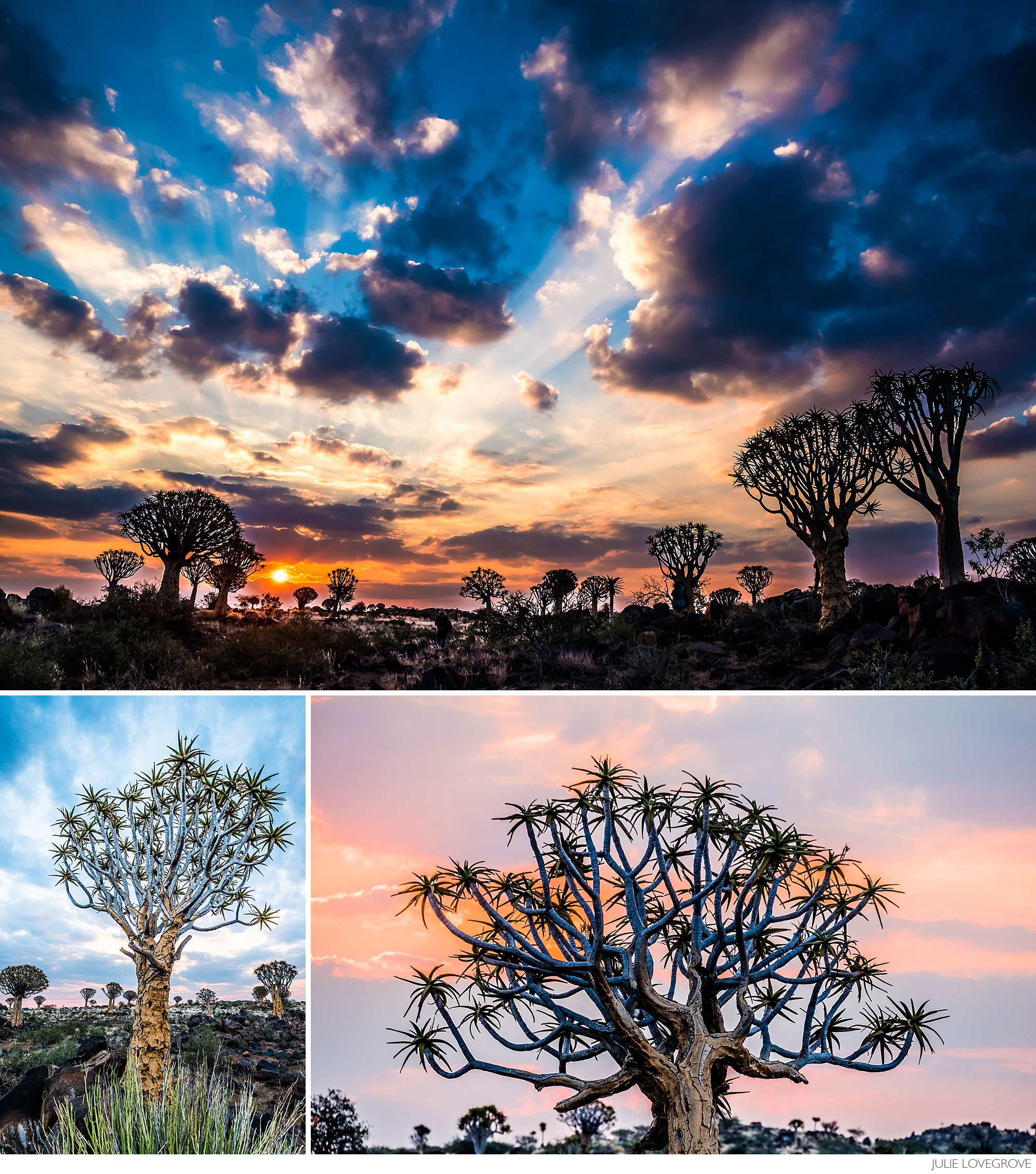
Top: XF18-55mm. ISO 400. f/8.0. 1/350 sec. Bottom L: XF14mm.ISO 800. f/8.0. 1/80 sec. Bottom R: XF55-200mm. ISO 400. f/5.6 1/240 sec
My fellow travellers and I were in our element at the myriad of photo opportunities at this abandoned diamond mining town that is slowly but surely being reclaimed by the desert sands. The wind makes the sand sting your legs when outside and swirls into the buildings through broken and missing windows and doors. We were terrified for our cameras and I held off changing my lens for as long as I could, but really needed to change lenses often to get the results I wanted in every situation. I crawled into the corner of a building and crouched over to make each lens change as quickly as I could.
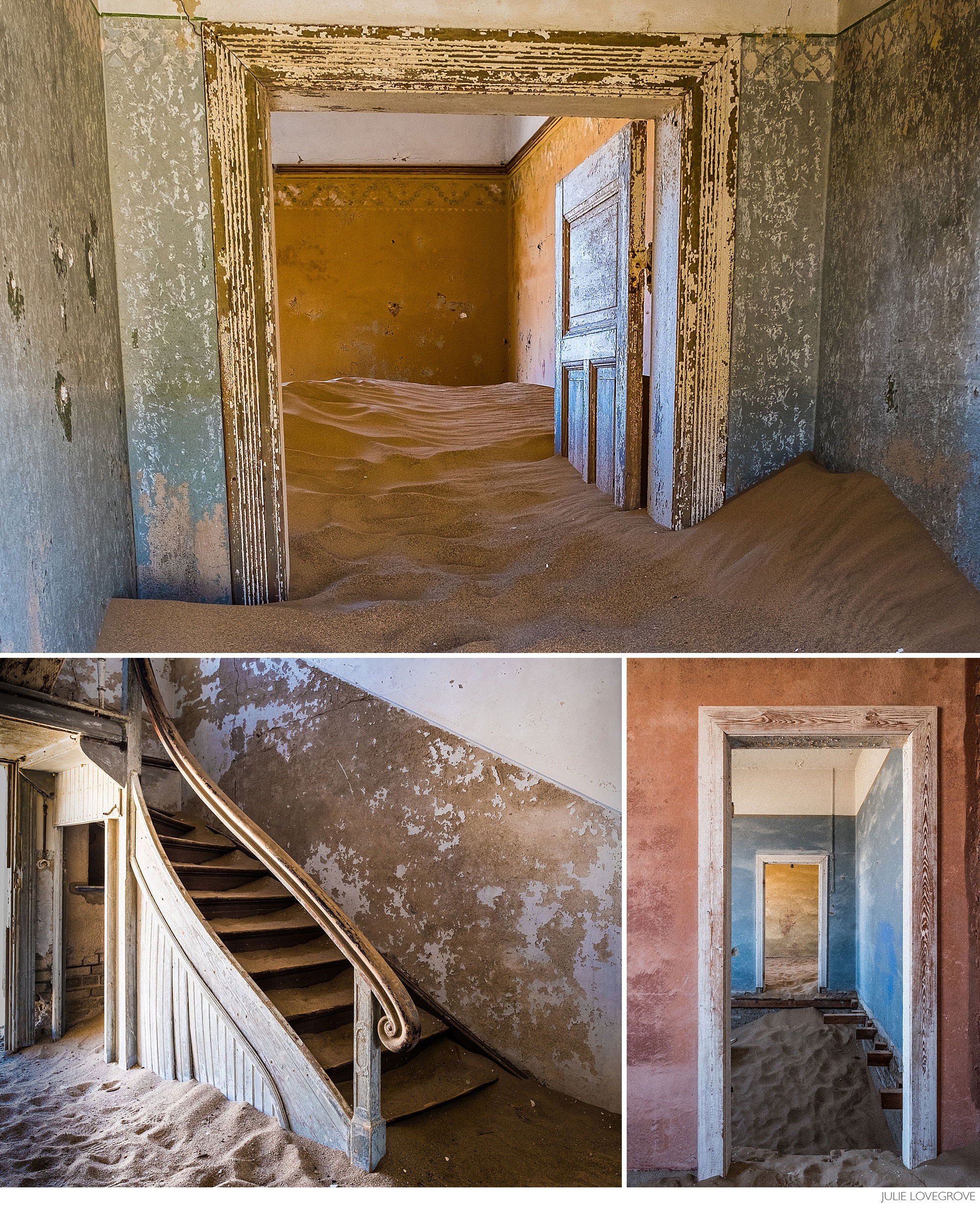
Top: XF14mm. ISO 400. f/5.6. 1/30 sec. Bottom L: XF14mm. ISO 400. f/9.0 1/10 sec. Bottom R: XF14mm. ISO 400. f/13. 1/13 sec.
I love trees, and I especially love to photograph dead ones. A few years ago I saw some photographs of dead trees that confirmed in my mind that I just had to visit Namibia. When I experienced Deadvlei for myself I could hardly contain my excitement. Another start in the dark and another hour’s drive on a long, empty road to arrive at an empty car park. With just one other car arriving shortly afterwards we were able to enjoy the whole of Deadvlei for over an hour with a total of just 9 people there. This was a very magical experience. Deadvlei itself is a dried clay pan surrounded by high sand dunes. To get there requires a 20 minute or so walk up, down, and around low dunes, so I was glad that my Think Tank Retrospective 30 camera bag wasn’t too heavy, nor was my Sirui carbon tripod.
When I got there, I could hardly contain myself. I rushed around like a mad thing taking a lot of photographs. After 30 minutes or so I calmed down, and realised that the best shots would be when the sun had risen high enough over the dunes one side to creep down the dunes into the bowl that is Deadvlei. I chose the trees I wanted to photograph the most when the light was right, sat down and relished the total silence caused by the absence of people and the high dunes muffling any sound. I’m going back again later this year, and I’m sure I’ll enjoy being there just as much.
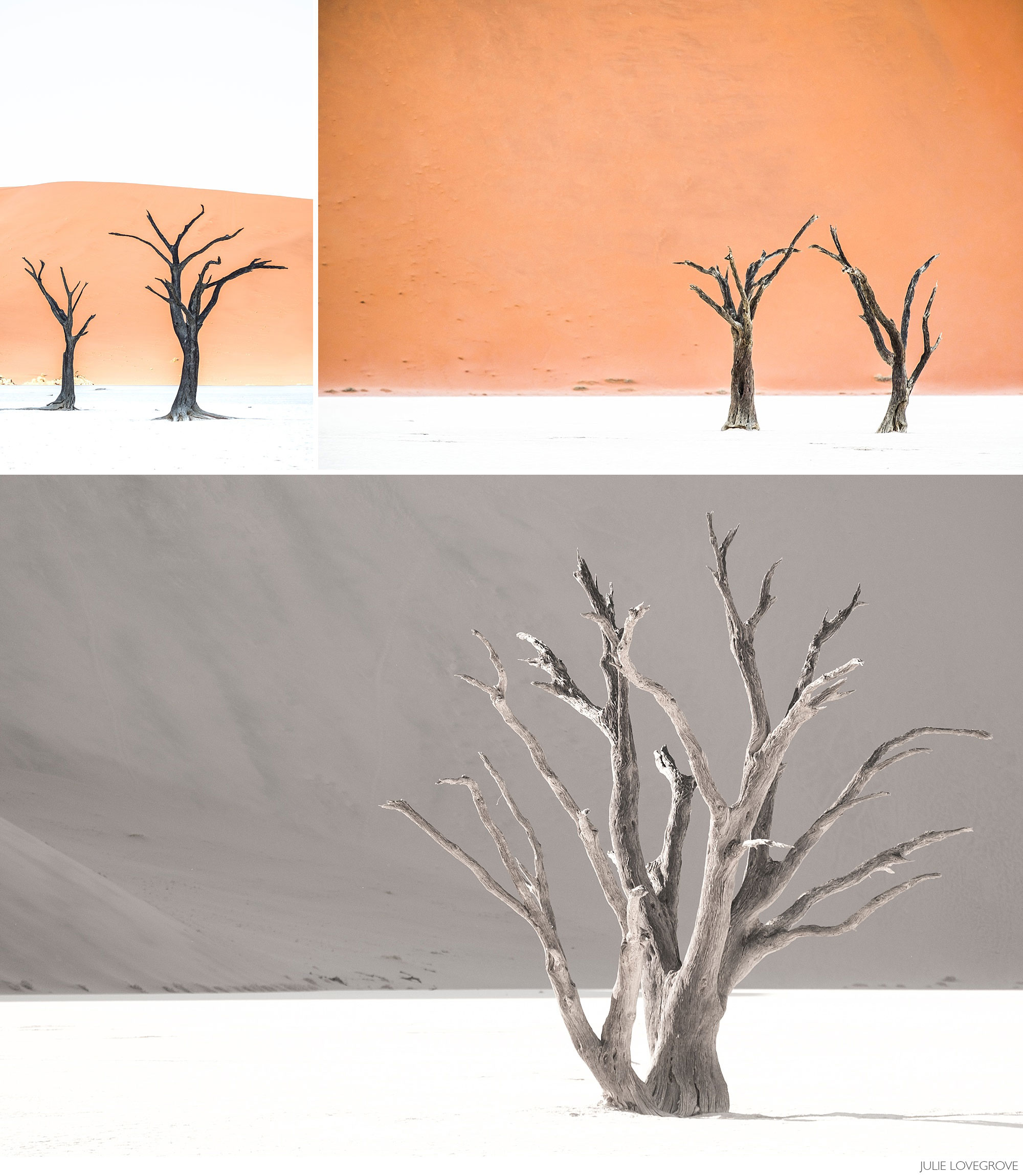
Top L: XF55-200mm. ISO 250. f/4.5. 1/900 sec. Top R: XF55-200mm. ISO 250. f/6.4. 1/180 sec. Bottom: XF55-200mm. ISO 250. f/4.5. 1/800 sec.
After several days of sand and mountains, it was refreshing to head to the ocean and get access to fast WiFi so that we could upload a few photographs to social media and let our families know that we were alive and well. A leisurely couple of hours were spent sitting on the sea wall watching and photographing the flamingos. There obviously isn’t too much of the carotenoid-containing food in the area, as they were all a rather pale pink. I set Velvia as the film simulation in Lightroom and increased the contrast to help enhance their colours.
We headed back inland for our most luxurious stay of the trip. A lodge where everything has been built without altering the landscape at all. Individual buildings nestle amongst giant boulders which almost look as if Disney had made them out of fibreglass. We were here primarily to photograph an enormous rock arch, but we also took advantage of the clear night skies and a new moon that was only 3 days into its cycle. The stars that you can see when away from light pollution are incredible. As well as photographing the Milky Way I showed my fellow photographers how to make star trails photographs. I find the excellent XF14mm lens is ideal for this.
Finally, we headed to Etosha National Park for some wildlife photography. Two 5.30 a.m. starts for guided drives were so worth it. The first morning we were treated to an uninterrupted view of the sun rising above the horizon, and managed to position ourselves in a good spot when a zebra and wildebeest appeared in front of the sun. It was the perfect ‘golden hour’ moment.
The next morning we headed in a different direction as our guide had heard that there were a couple of lions close to one of the roads. We kept our fingers crossed for a good sighting and were in luck. It was barely light but the camera performed amazingly at the 8000 ISO I needed to keep the shutter speed high enough to freeze the movement. It’s obviously not possible to use a tripod or even a monopod in a game viewer vehicle without mounts or bean bags for photographers, so I braced my elbows on the open sides of the vehicle and waited for everyone to stop shuffling around. The slightest movement from a passenger seems to make the whole thing rock like crazy; I’m sure it doesn’t really, but when you’re trying to capture an animal in low light and you’re even holding your breath to reduce your own movement, everything seems so exaggerated even with OIS.

L: XF100-400mm. ISO 8000. f/6.4. 1/300 sec. Top R: XF100-400mm. ISO 8000. F/6.4. 1/110 sec. Bottom R. XF100-400mm. ISO 8000. f/5.6. 1/40 sec.
These two great weeks were so good I’m running another tour to Namibia in September this year and at the time of writing still have 3 places available. Very shortly however I have to either confirm all accommodation or release some rooms that I have on hold, so if you’re interested and want to join me you’ll need to book pretty much immediately. Here are the details, and if you can’t make it this September but would be interested in a trip next April or May, please contact us: https://passionphotographyexperience.com/namibia-photography-tour-2018/


